Getting Steamy: Controlling Fog on Your Home Windows
It’s a common problem in warm climates– you’re cooling the inside of your house as usual but wake up to tons of condensation or “steam” on your windows. Never fear – there are ways you can diminish this indoor moisture and return your home to its natural, and less messy, state.
What causes the moisture?
In its simplest terms, moisture appears on windows when water vapor condenses on the cold glass, causing them to have a “fogged up” appearance. This phenomenon is similar to when your cold drink glass sweats on a hot summer day. The colder the area becomes; the more moisture will appear.
Should I be worried?
While some condensation on your windows is considered normal, especially in the Florida humidity, it is important to note if the moisture appears in excess – this could be a sign of a greater problem. Allowing additional humidity to build up in your home can lead to the growth of mold, which can cause health risks to your family and your pets, such as allergies, nasal issues and triggers for those struggling with asthma.
What causes humidity?
While the weather can be to blame for humidity inside the home, there are other indoor factors that can contribute to the problem. For example, common household chores such as cooking, washing dishes, or doing laundry can add to your home’s humidity levels. Other contributors include showering and even breathing.
Where is the fog coming from?
It’s important to note where the condensation is originating. Fog on the outside of your windows is caused by your home temperature becoming lower than the outside air, like on a hot, humid, Florida day. Condensation on the inside implies there are high levels of humidity inside the home. This means its time to use a dehumidifier or turn down the thermostat (which can also save you money on your electric bill).
How does humidity affect my home?
Excess humidity inside your house can also cause damage to the interior such as deteriorating insulation peeling paint, stains on walls, rotting of wood floors and other cosmetic and structural issues.
What can I do to decrease humidity?
In general, homes that are more energy-efficient have an easier time blocking out the moisture. If this is not the case, here are a few tips you can follow.
- Be mindful of the appliances you’re using throughout the day
- Make sure your home is properly vented
- Use a fan when using a dishwasher or washing machine on a cooler day
Here are a few additional ideas from Housing-tips.com:
- Cover pots and pans when cooking
- Make sure insulation is properly filling all nooks and crannies
- Leave room doors open (even to rooms you don’t use)
- Use bathroom exhaust fans
- Make sure your washer and dryer are vented properly to the outdoors
- Add a moisture barrier over the soil in your crawlspace
- Use ceiling fans
- Keep the bathroom door closed while showering and bathing
- Make sure your gutters work properly
- Keep furniture slightly away from the walls (external walls especially)
- Keep all air vents open (even in rooms you don’t use)
- Make sure air can circulate through your fireplace
- Keep all air registers open
- Add caulking and weather-stripping around windows and doors
- Use your kitchen exhaust fan
- Open a few windows – especially in rooms you use the most
With these simple tricks, you can help decrease the levels of humidity in your home while keeping it nice and cool.
If you have questions regarding humidity in your home or your heating and air conditioning unit, please give Barineau Heating and Air Conditioning a call at (850) 580-4029.




